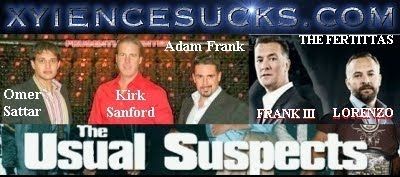.jpg) Recently several Web sites have emerged that enable consumers to bid for legal services. Examples include: ExpertBids and Shpoonkle. (Don’t ask me how to pronounce it). They all work pretty much the same way.
Recently several Web sites have emerged that enable consumers to bid for legal services. Examples include: ExpertBids and Shpoonkle. (Don’t ask me how to pronounce it). They all work pretty much the same way.
You submit a description of your project or the service you want, your location and your estimated budget. You create a secure account with a user name and password. Your service request is then posted or published to a lawyers who have registered for the service so they can bid on your work. When a lawyer bids for your work, you receive an email (each bid includes a rate, a description, and the lawyer’s profile, rating and client reviews). When the lawyer bids, whether bid by the hour or fixed price, you receive an email which includes a rate, a description, and the lawyer’s profile, rating and client reviews. The process gives you options and a basis for comparing how different lawyer;s will submit bids and pricing for similar work.
The process is always free to the potential client. Once you are connected to a lawyer you can continue your conversation either online or off-line. The sites enable you to communicate with the lawyer online directly, but often you don’t get any free legal advice or any legal service until you accept a retainer agreement and the lawyer/client relationship is established.
For law firms that have learned how to offer legal services for common legal matters for a fixed fee, these bidding sites could be another channel to the consumer and potential clients. These law firms, often virtual law firms, are low-cost producers of legal services, and can out bid more traditional legal firms without sacrificing quality or their profit margins.
Many of these law firms offer what are called, “limited legal services”, which enable these law firms to offer a low cost solution to consumers, but often consumers have no understanding of this concept. See for example the law firms listed in the MyLawyer.com Directory of Virtual Law Firms. We think that the bidding sites should have articles and information on their web sites describing the “limited legal service” concept as this would be way to educate consumers about another way to cost effectively buy legal services.
A problem that we see with the bidding sites that we reviewed is that there is no easy for the consumer to describe that they want “limited legal services“, as distinguished from traditional legal services. There are options for bidding by the hour, or by the project, but no option for limiting the scope of representation. “Unbundling legal services“, is a relatively new idea, but many states (more than 35) have already passed amendments to their Professional Rules of Responsibility that enable law firms to offer “limited legal services” as long as the retainer clearly defines the scope of representation.
I think this is a critical gap in the way the operators of these site understand how middle class consumers want to purchase legal services. I also think that there is likely to be a disconnect between what the consumer bids for a service, and what they law firm delivers for the bid price. Without a clear specification of the scope of services, there is bound to be miscommunication and confusion.
It is too early to predict whether these “bidding sites” will survive. In the “dot-com boom and bust” era, there were several experiments with lawyer bidding, but all the sites failed because they could not generate enough volume to support their overhead structure.
Susan Cartier Liebel, the President of Solo Practice University has written a good blog post analyzing these sites, that is worth reviewing by consumers who are interested in this approach to securing legal services.

.gif)





